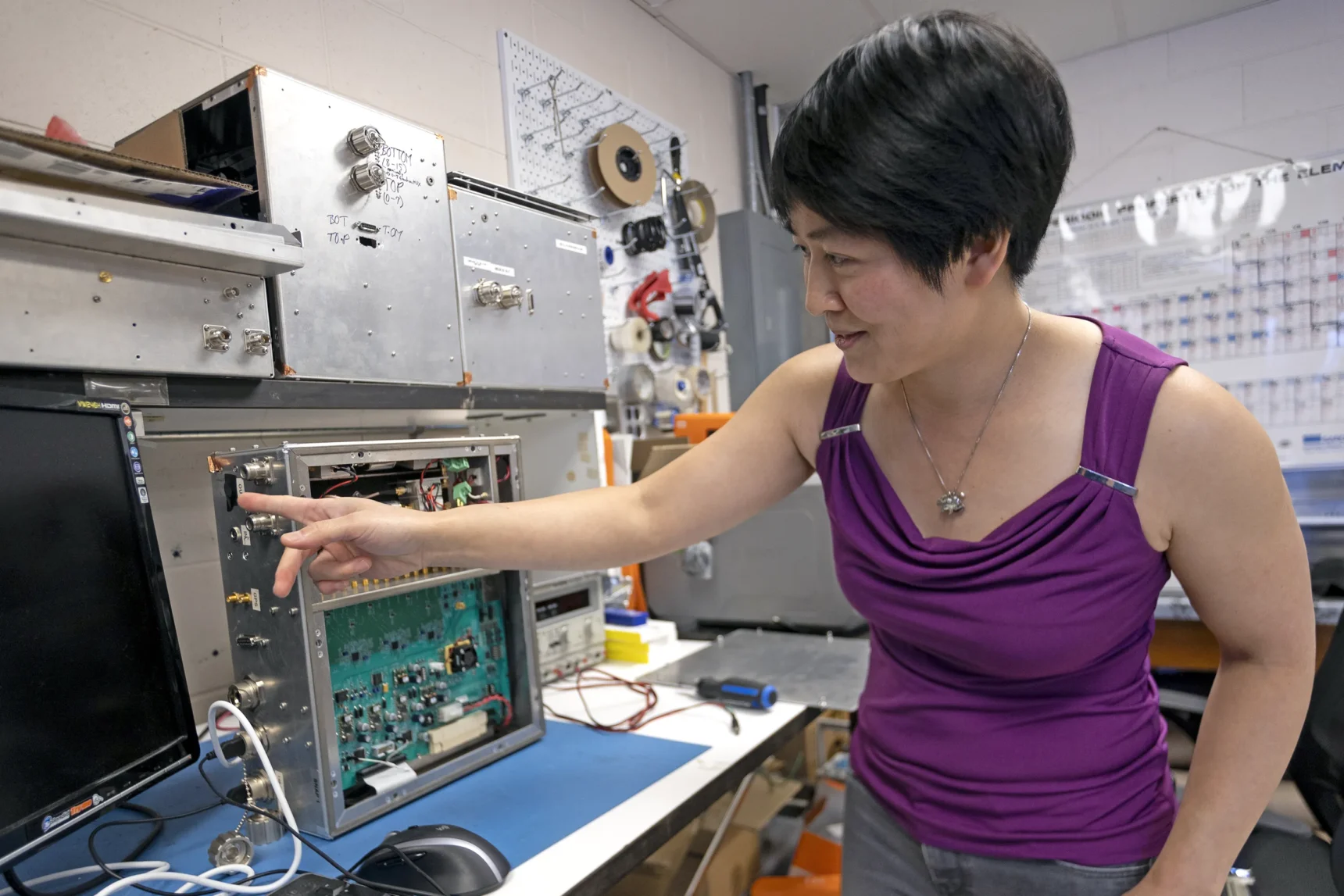The Experimental Cosmologist Hunting for the First Sunrise
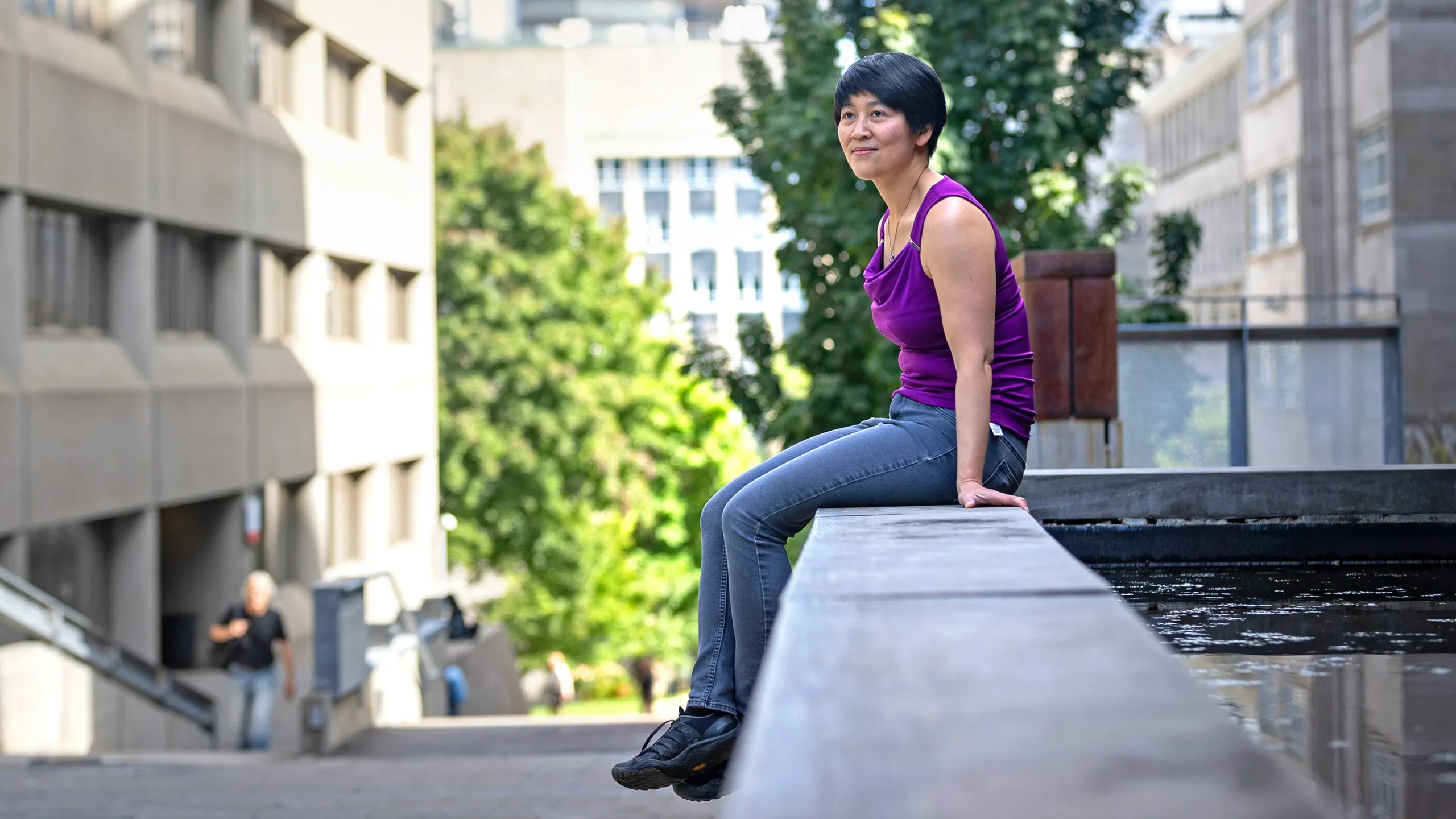
Cynthia Chiang is on a quest to peer back in time and catch a glimpse of the very early universe.
Allen McEachern for Quanta Magazine
Introduction
Cynthia Chiang always wanted to work with her hands. Although it may sound counterintuitive, it’s what led her to the fairly abstract field of observational cosmology: studying the cosmos’s origin and development by gathering data on the universe’s early years.
Her trip into this work began when she was applying to graduate school and she checked out a lab in a basement at the California Institute of Technology. “I walked in and saw all this vacuum equipment and all these fun cryostats, and in a split second, I was like, ‘Yeah, that’s what I want to do when I grow up,’” she said. “I think I have a track record of making possibly impulsive, poorly informed decisions. But this was a great decision.”
After completing her doctorate, she received a Dicke fellowship at Princeton University, where she got her start studying the cosmic microwave background (CMB) — relic radiation from the Big Bang — as part of the Planck telescope’s science team. But the CMB experiments (and teams) were getting larger, and Chiang wanted to study something that would allow her to build an instrument on her own.
While figuring out what to do with her life again, Chiang spent a year at the South Pole as one of the “winterover” scientists for the South Pole Telescope. While she was there, a position opened up in South Africa, where the Square Kilometer Array radio telescope would soon be built. She pivoted from cosmic microwaves to cosmic radio waves. “It’s one wavelength over,” she said. “How hard could it possibly be?”
Today, as an associate professor of physics at McGill University, she builds, deploys and runs instruments that can detect radio signals from pivotal eras in the early universe — the dark ages and cosmic dawn. The former is a long-ago time when the universe was just a sea of neutral hydrogen gas; the latter a slightly later time when the first stars turned on. Catching the light from that first cosmic sunrise, and the dark even before that dawn, is so tricky that Chiang and her colleagues must go to the ends of the Earth to have even a hope of disentangling their signals from the rest of the cluttered cosmos. (The James Webb Space Telescope and its many-faceted mirror are also gazing back toward these early times, trying to see that oldest starlight.)
So far, scientists have seen little of the dark ages, and just one team — called EDGES — has (maybe) seen hints of cosmic dawn. Their results, though, require confirmation or refutation from a different instrument.
An instrument like the ones Chiang works on.
True to her roots, Chiang is using her team’s hand-built instruments to catch sight of these ancient cosmic eras. “The science goals overall are these big questions about how the universe works and what its fate is,” she said. But the experiments can be — if not exactly simple — at least small-scale.
Quanta spoke with Chiang about the universe’s distant past, scientists’ difficulty time-traveling there, her team’s work in remote places, and why mysteries are the best part of science. The interview has been condensed and edited for clarity.
What were the best and worst parts of your year at the South Pole?
From the moment I set foot on the continent, I felt like I had come home.
The southern lights are phenomenal. You could be having the worst day in the world, but then the telescope is a 15-minute walk from the main station. As soon as I closed that freezer door behind me and there was nothing but darkness and the southern lights outside, everything was OK. That light show is just for you.
I also really love the community there. Random people don’t end up there just by accident. The South Pole applies a very narrow band-pass filter.
Speaking of narrow filters, your cosmology involves looking for a specific radio wavelength called the 21-centimeter line. What is that?
The 21-centimeter line is a natural radio emission that comes from hydrogen atoms, which are the most abundant element in the universe. You can think of the universe as being filled with all this gas glowing at some particular color, or wavelength. But, like the rest of the cosmos, the hydrogen gas is moving away. That movement stretches the light and makes its wavelength longer. We know what hydrogen’s natural glow — or color — is, so we know when it gets shifted to different colors because of how fast the hydrogen is moving away from us. Or equivalently and more importantly for these experiments, how far away it is.
Then you can build a telescope and target a particular color for this 21-centimeter emission — something that maps to a specific epoch in the universe’s history, like the cosmic dark ages.
Just by dialing your telescope to the right wavelength, you can tune into any part of the universe’s history.
It’s like an electromagnetic time machine.
Basically.
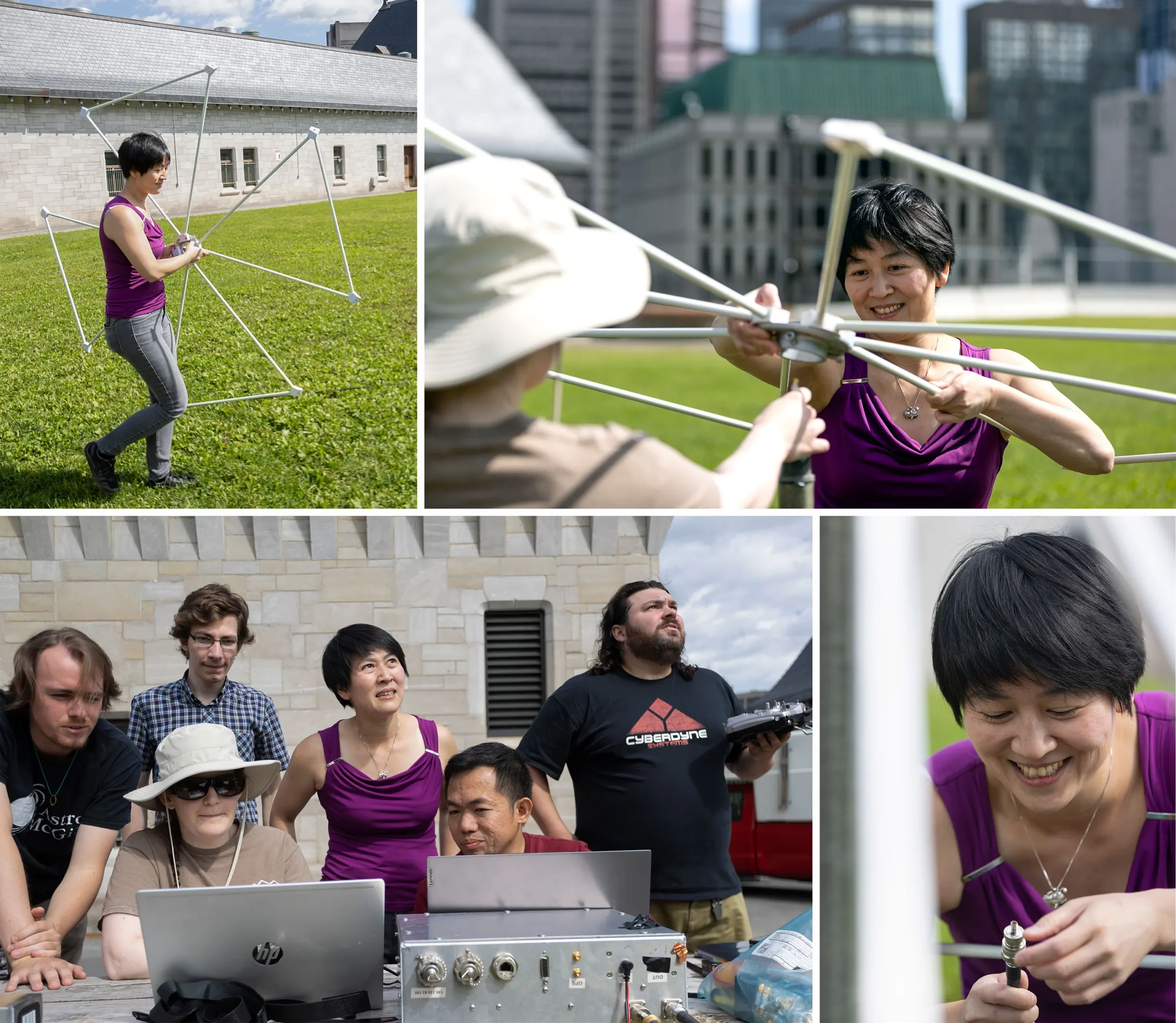
Recently, Chiang and her team at McGill University used a drone (carrying a calibration source) to test their equipment in Montreal. Clockwise from top left: Chiang carries one of her antennas through Rutherford Park, Chiang and postdoc Cherie Day set up the antenna, Chiang fiddles with equipment, and the team watches as the drone flies overhead while the antenna tracks a radio source aboard the drone.
Allen McEachern for Quanta Magazine
So after the Big Bang, how did the universe progress into the parts of its history we call the dark ages and cosmic dawn?
Immediately after the Big Bang, the universe was extremely hot and dense, a soup of particles.
Fast forward, and as the universe expands, it cools off, eventually becoming cool enough for those first neutral hydrogen atoms to form. And at that point, the universe becomes dark. And very boring. Because there’s nothing but gas, most of which is hydrogen. Those are the dark ages.
But within this bath of gas, some small areas are slightly more dense than the rest, and the regions that are over-dense start to collapse under the influence of gravity. At some point, there’s enough matter collapsing that the first stars start to form. The birth of those first stars is known as “cosmic dawn,” and they are quite different from the stars we’re used to seeing today. We’re trying to find out exactly how these objects evolved and gradually became more like the stars of today.
How do you see these ages in your radio experiments?
In the 21-centimeter line, there should be a small absorption feature — a dip in the glow — associated with the dark ages. A larger sharp feature should be associated with cosmic dawn.
How have people gone about measuring those signals from dawn? And what would cosmologists like to glean from them?
Only two experiments so far have made any measurements of this period. One is EDGES, which measures the temperature of the sky at different frequencies. It’s like taking your car radio and tuning it to all stations at the same time and listening to everything that’s being broadcast.
EDGES is looking for a tiny dip in that signal that indicates those first stars turning on. So in the car radio analogy, you’d be listening for static on all the stations, and a handful of quieter stations in the middle.
The EDGES team thinks they detected that dip in their data. If that is true, it’s our first and only glimpse of cosmic dawn. If we find out that the EDGES signal is real, we can go to town — there could be new physics in there. But it could be an instrumental effect, and another experiment, SARAS 3, did a very similar measurement and saw nothing.
It’s easy to trick yourself into thinking that you’re seeing something real, when it could just be, for example, a loose cable. We need other experiments to weigh in. Because this data is really all we have from the cosmic era, and we’re not sure how to interpret it yet, we don’t know much at all about that time.
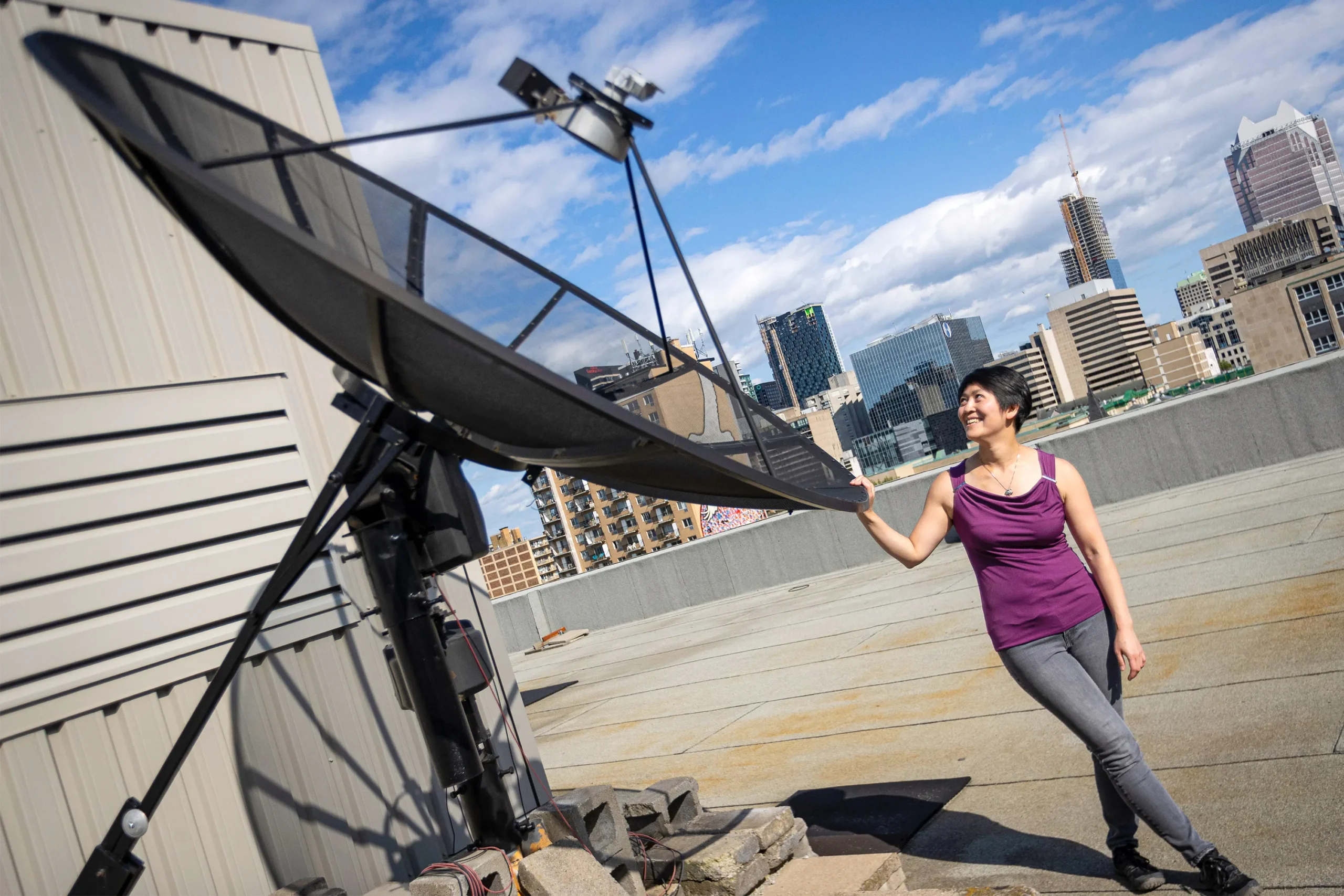
Chiang builds instruments that collect radio waves from the primordial cosmos.
Allen McEachern for Quanta Magazine
You happen to operate such an experiment: PRIZM, which stands for “Probing Radio Intensity at high-Z from Marion.” What is the origin story of that project?
That’s a wild ride. PRIZM is the successor to an older experiment that, around 2015, needed a new site. At the same time, my colleague Jon Sievers and I were flying around South Africa, and we read an in-flight magazine that described this place called Marion Island, in the middle of nowhere in the southern Indian Ocean. It looked really remote: 2,000 kilometers away from anything. That’s got to be pretty radio-quiet, we thought — not a lot of interference from human-made radio signals. There was a research base and some infrastructure there.
We got funding to send the experiment down. After that initial year, we completely rebuilt the instrument and reincarnated it as PRIZM.
So how does PRIZM work?
PRIZM has two independent antennas that are observing at the same time, one centered at 70 megahertz and one at 100 megahertz, which are really low radio frequencies where you’d expect to see extremely stretched radio light from the early parts of the universe, and the first stars turning on.
If we see any weird features in our data, and if it turns out to be something caused by our instrument and not from space, we expect it to change in frequency between those two instruments. But if it’s something real on the sky, it should be consistent between the two.
How do the results look so far?
The data are beautifully clean, and we have a lot in hand. Marion is far enough from the mainland that we basically don’t see FM radio, whose frequency butts up against the cosmic dawn signal.
But we still have a lot of homework to do in understanding all of the instrument’s idiosyncrasies.
And the PRIZM antennas themselves are past their useful life span. They have been battered on Marion for five years, so they are in rough shape. We’ve wrapped up the experiment, and I need to build something new.
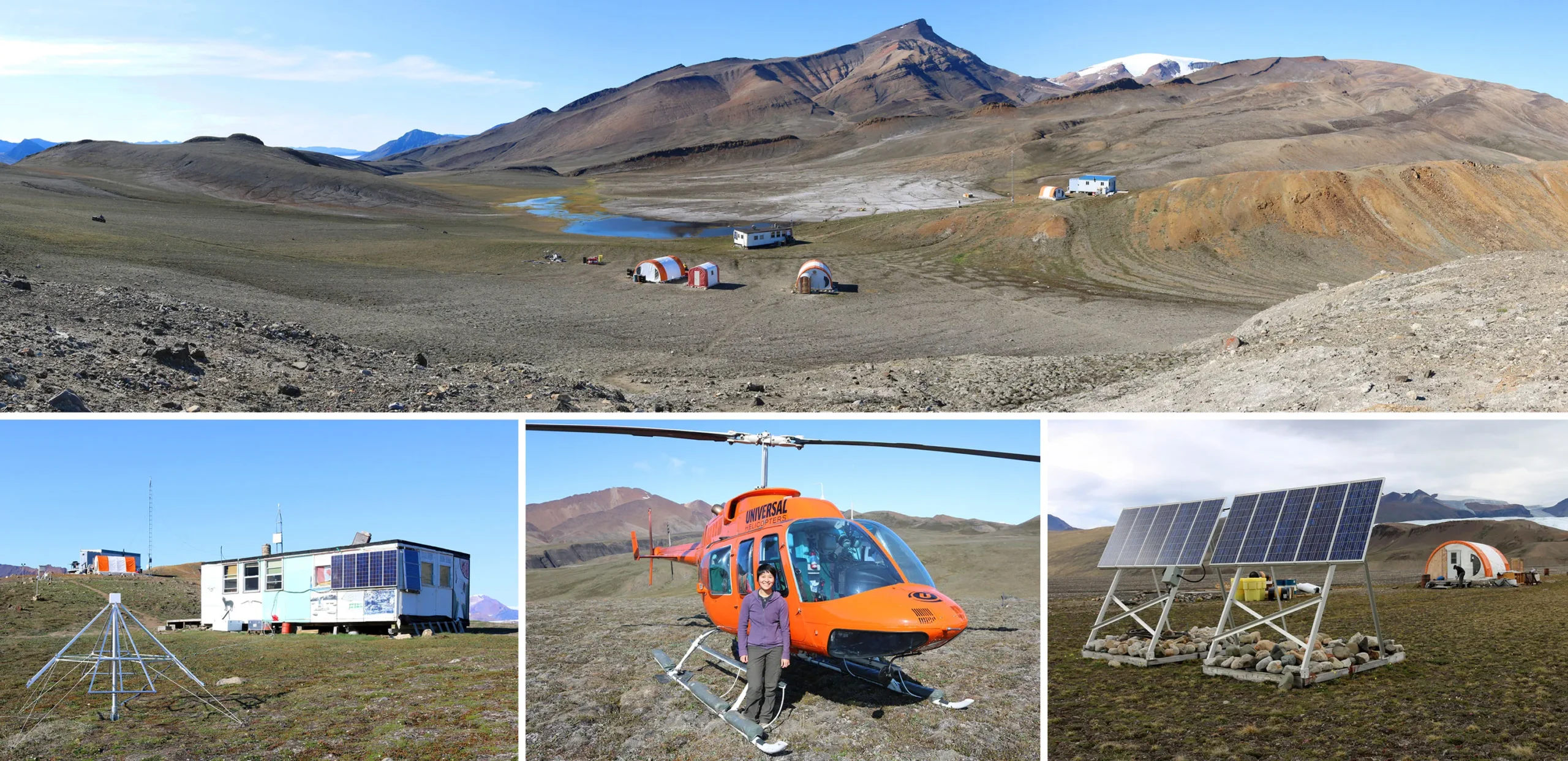
In July 2019, Chiang and her team were at the McGill Arctic Research Station on Axel Heiberg Island, surveying potential sites for ALBATROS antennas. At top: A panorama of the research station. Bottom row, from left: An ALBATROS antenna near the camp; Chiang and a helicopter; the site where the team would later install an ALBATROS antenna.
Courtesy of Cynthia Chiang
What is Marion Island like?
It’s magic. It’s one of the most beautiful places I’ve ever worked. It is also the most difficult. The South Pole pales in comparison. It’s windy and rainy, a little above freezing. There’s salt spray, so Marion eats metal for breakfast. Getting anything to survive on there is very difficult.
We set up our PRIZM antennas about four kilometers away from the main base — an hour hike to and from work, through terrain that is not especially forgiving. There’s mires, there’s lava rocks. But it’s worth it.
On that same island, you had another experiment, called ALBATROS, which studied the dark ages. How did that experiment get started?
After we installed PRIZM, we realized Marion is this phenomenal place for low-frequency astronomy. What else can we do here? The other piece of completely unexplored territory is the dark ages, which show up at frequencies of 30 megahertz and below.
You should be able to measure fluctuations in that signal that would give you even more information about the universe’s origins than what we’ve gotten from the cosmic microwave background. The CMB is two-dimensional because it was created so quickly, whereas the dark ages lasted for a long time, and observations of them can give you a three-dimensional view of what was going on, those billions of years ago. This is a 50-year dream.
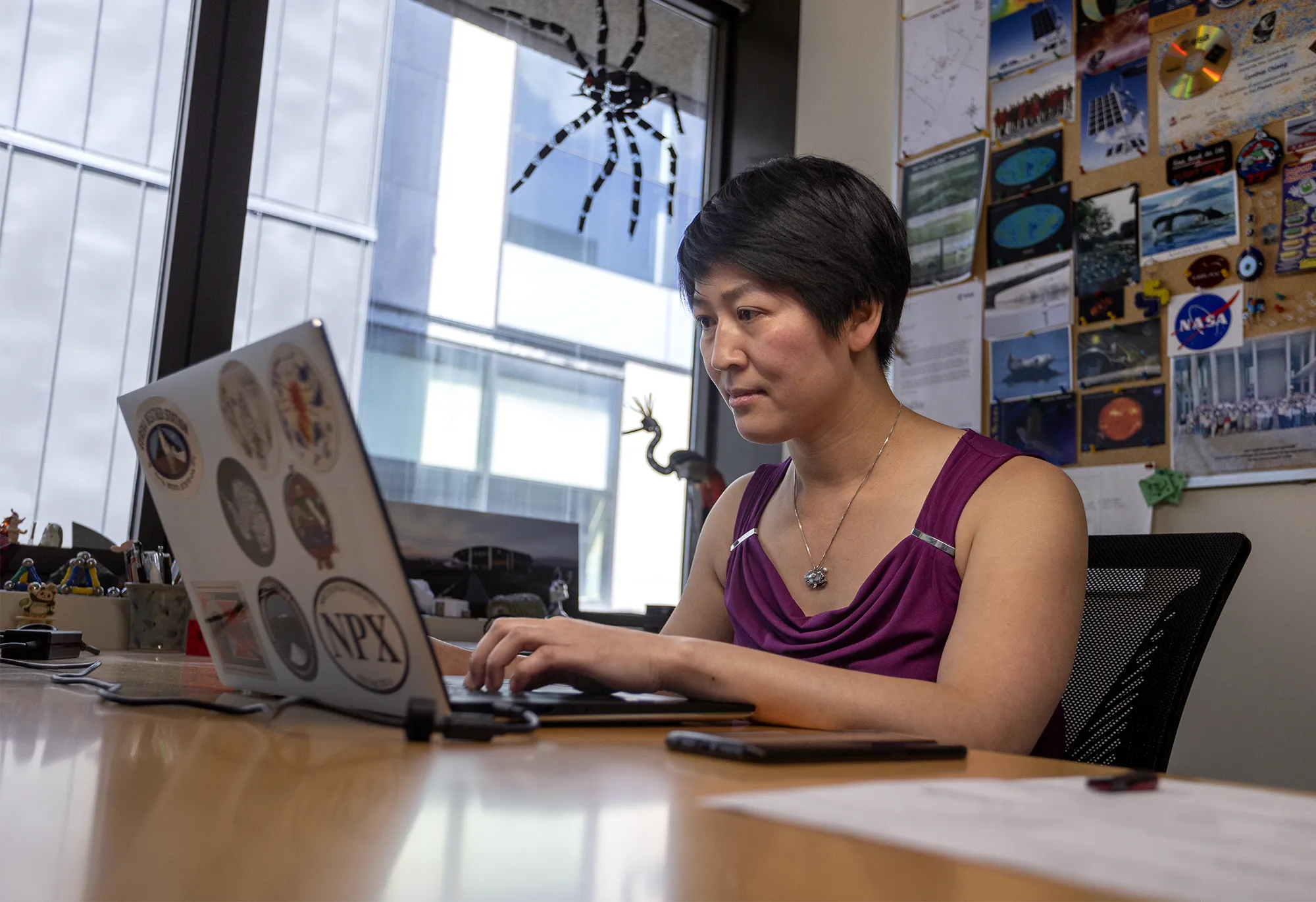
To see so far back in time, Chiang is searching for long, low-frequency radio waves that have been stretched during their journey through the cosmos.
Allen McEachern for Quanta Magazine
Where is the dream right now? What have scientists already observed about the dark ages?
Basically nothing. The lowest frequencies measured to date are about 2 megahertz or so, in data from the ’70s. That’s still the state of the art 50 years later. We’re still there. At low frequencies, the ionosphere kicks in and gets in the way.
Before we have any prayer of getting the cosmology, we need to figure out what the Milky Way galaxy, the clutter in our foreground, looks like at these frequencies and then subtract it off. You need an interferometer for that — that’s multiple antennas working together as a grand unified instrument. The larger your array, the finer the resolution.
Marion was an ideal place to start this project because we could distribute antennas across the entire island, and there are huts along the perimeter, which are very convenient places to set up bases of operations. That was the original plan. We started installing a couple of prototype antennas to see how things went.
You said “original plan.”
In the middle of the project, I moved from South Africa to Canada, to McGill University. The first thing I did was try to find somewhere radio-quiet near Montreal. And it turns out the Arctic is phenomenal, and McGill had a research station in that region. We’re setting up another ALBATROS array up there, and we were finally able to return last year and install our first two autonomous stations after sitting on our hands for two years because of the Covid pandemic.
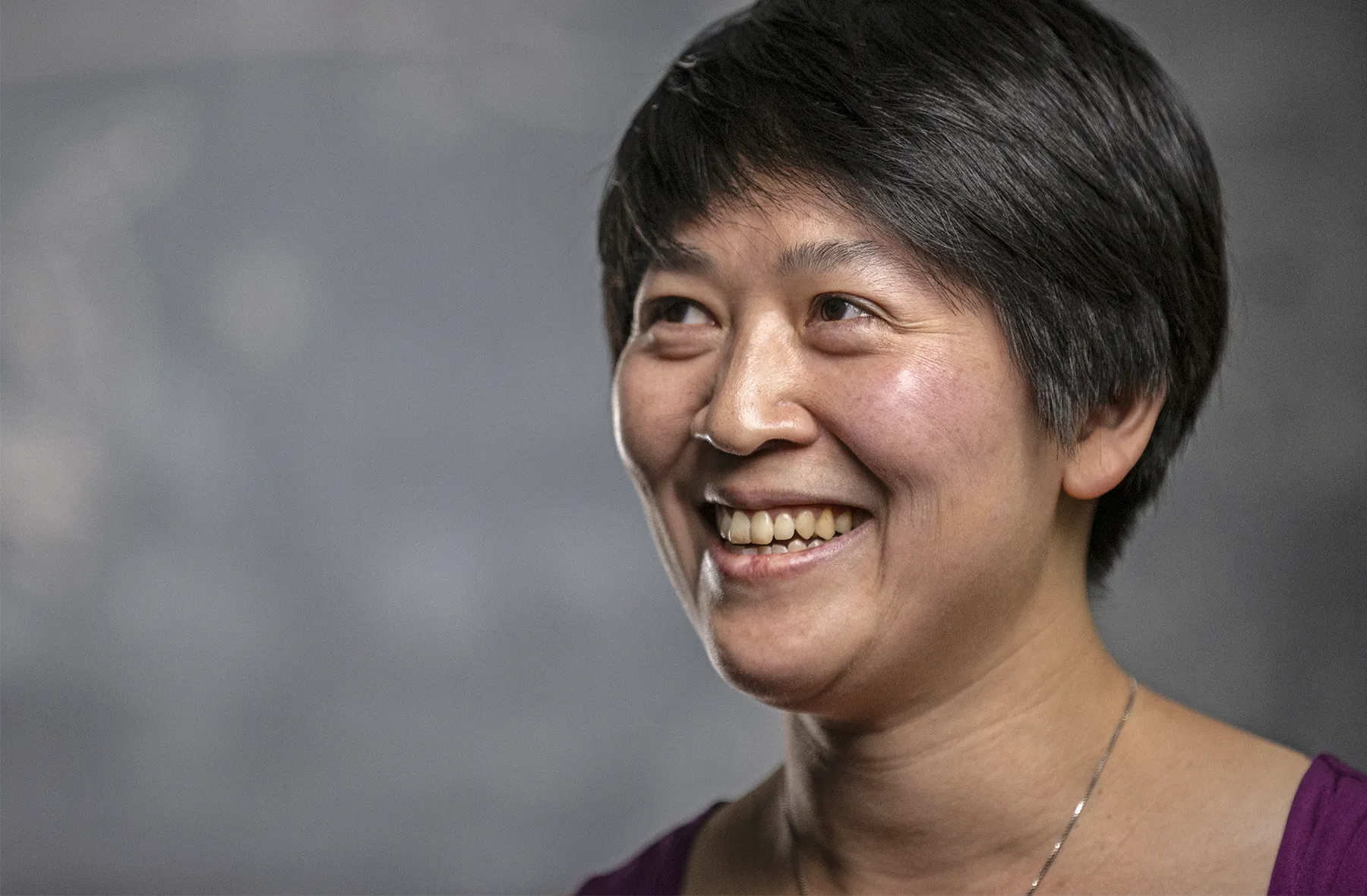
Working in remote environments is challenging, Chiang said, but there’s a particular beauty and magic to such faraway places.
Allen McEachern for Quanta Magazine
I bet that wasn’t easy. Do you have any favorite anecdotes from your time in remote locations on Earth?
The worst thing on Marion was mouse-proofing everything. This is not something that I was prepared for as an experimental physicist.
We figured out that metal mesh cloth deters rodents, so we wrapped all of our cables in that.
Before we went on the cable-wrapping exercise, I took some of the wire mesh and made a little bag out of it, and I put a cookie inside and left it overnight. The next day, I could see chew marks like the mice had tried to get in, but the cookie was intact. I was like, “OK, our electronics are going to be safe.”
The extent to which we’ve had to think about humans versus wildlife in setting up our instruments — I have devoted more CPU cycles to that than I ever would have expected.
In the Arctic, there’s small nibblers like lemmings, but there are also big nibblers with fangs, like wolves and foxes. Knock on wood, we haven’t had any major disasters yet, but I figure it’s only a matter of time.
Before a wolf takes a whole antenna home?
That would be a musk ox.
What keeps you motivated to study these parts of the universe’s history?
I love that there are mysteries in the universe.
I love the day-to-day aspect. When I’m not thinking about the mysteries of the universe, I’m thinking about how to make our instruments survive and how to prevent musk ox from toppling our antennas.
